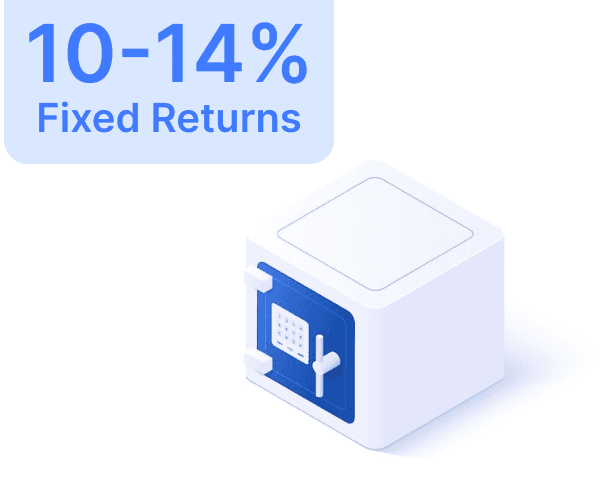How to Choose the Best Dividend Yield Fund



A dividend yield fund is a form of mutual fund that invests mostly in companies that have the potential to pay regular dividends to their shareholders. The goal of this fund is to generate income for investors by investing in high-dividend-yielding stocks. According to SEBI, a dividend yield fund is required to invest at least 65% of its assets in equity and equity-associated instruments.
Investing in dividend yield funds can be beneficial for certain types of investors. Investors looking for a passive income source can benefit from regular dividend payouts offered by these funds. Additionally, investors with a low-risk appetite can consider dividend yield funds as they are less volatile compared to other equity mutual funds.
When investing in dividend yield funds, it is important to consider factors such as risk tolerance and investment tenures. Traditional investors who prioritize portfolio stability should look for funds with a higher allocation to large-cap equities. It is also crucial to assess the duration of the fund's investment tenure, as a fund that has experienced both bull and bear phases can provide higher returns.
Investing in the best dividend yield mutual funds can offer several advantages. These funds provide equity exposure with lower risk compared to other equity-oriented schemes, making them suitable for investors seeking higher returns than fixed-income instruments. They also offer regular income through the dividends declared by the underlying companies. Investors can allocate their funds to dividend yield funds through lump sum investments or a Systematic Investment Plan (SIP).
While dividend yield funds have their advantages, it is important to be aware of the risks involved. These funds are subject to inherent risks of mutual funds, such as liquidity risk, credit risk, and market risk. Additionally, the tax incidence on dividend income has increased, resulting in higher taxes for investors. The returns of dividend yield funds are subject to market risk and cannot be guaranteed.
In conclusion, dividend yield funds can be a suitable investment option for investors looking for a passive income source and those with a low-risk appetite. It is important to carefully consider factors such as risk tolerance and investment tenures when selecting the best dividend yield mutual funds. Investors should also be aware of the inherent risks and tax implications associated with these funds. Overall, dividend yield funds can provide equity exposure with lower risk and the potential for high returns over the long term.
A dividend yield fund is a form of mutual fund that invests mostly in companies that have the potential to pay regular dividends to their shareholders. The goal of this fund is to generate income for investors by investing in high-dividend-yielding stocks. According to SEBI, a dividend yield fund is required to invest at least 65% of its assets in equity and equity-associated instruments.
Investing in dividend yield funds can be beneficial for certain types of investors. Investors looking for a passive income source can benefit from regular dividend payouts offered by these funds. Additionally, investors with a low-risk appetite can consider dividend yield funds as they are less volatile compared to other equity mutual funds.
When investing in dividend yield funds, it is important to consider factors such as risk tolerance and investment tenures. Traditional investors who prioritize portfolio stability should look for funds with a higher allocation to large-cap equities. It is also crucial to assess the duration of the fund's investment tenure, as a fund that has experienced both bull and bear phases can provide higher returns.
Investing in the best dividend yield mutual funds can offer several advantages. These funds provide equity exposure with lower risk compared to other equity-oriented schemes, making them suitable for investors seeking higher returns than fixed-income instruments. They also offer regular income through the dividends declared by the underlying companies. Investors can allocate their funds to dividend yield funds through lump sum investments or a Systematic Investment Plan (SIP).
While dividend yield funds have their advantages, it is important to be aware of the risks involved. These funds are subject to inherent risks of mutual funds, such as liquidity risk, credit risk, and market risk. Additionally, the tax incidence on dividend income has increased, resulting in higher taxes for investors. The returns of dividend yield funds are subject to market risk and cannot be guaranteed.
In conclusion, dividend yield funds can be a suitable investment option for investors looking for a passive income source and those with a low-risk appetite. It is important to carefully consider factors such as risk tolerance and investment tenures when selecting the best dividend yield mutual funds. Investors should also be aware of the inherent risks and tax implications associated with these funds. Overall, dividend yield funds can provide equity exposure with lower risk and the potential for high returns over the long term.
A dividend yield fund is a form of mutual fund that invests mostly in companies that have the potential to pay regular dividends to their shareholders. The goal of this fund is to generate income for investors by investing in high-dividend-yielding stocks. According to SEBI, a dividend yield fund is required to invest at least 65% of its assets in equity and equity-associated instruments.
Investing in dividend yield funds can be beneficial for certain types of investors. Investors looking for a passive income source can benefit from regular dividend payouts offered by these funds. Additionally, investors with a low-risk appetite can consider dividend yield funds as they are less volatile compared to other equity mutual funds.
When investing in dividend yield funds, it is important to consider factors such as risk tolerance and investment tenures. Traditional investors who prioritize portfolio stability should look for funds with a higher allocation to large-cap equities. It is also crucial to assess the duration of the fund's investment tenure, as a fund that has experienced both bull and bear phases can provide higher returns.
Investing in the best dividend yield mutual funds can offer several advantages. These funds provide equity exposure with lower risk compared to other equity-oriented schemes, making them suitable for investors seeking higher returns than fixed-income instruments. They also offer regular income through the dividends declared by the underlying companies. Investors can allocate their funds to dividend yield funds through lump sum investments or a Systematic Investment Plan (SIP).
While dividend yield funds have their advantages, it is important to be aware of the risks involved. These funds are subject to inherent risks of mutual funds, such as liquidity risk, credit risk, and market risk. Additionally, the tax incidence on dividend income has increased, resulting in higher taxes for investors. The returns of dividend yield funds are subject to market risk and cannot be guaranteed.
In conclusion, dividend yield funds can be a suitable investment option for investors looking for a passive income source and those with a low-risk appetite. It is important to carefully consider factors such as risk tolerance and investment tenures when selecting the best dividend yield mutual funds. Investors should also be aware of the inherent risks and tax implications associated with these funds. Overall, dividend yield funds can provide equity exposure with lower risk and the potential for high returns over the long term.
Author

Harish Malhi
Read More 📖


Axis Bank Credit Card Net Banking
Axis Bank Credit Card Net Banking
August 5, 2024
August 5, 2024




PNB Fixed Deposit (FD) Interest Rates
PNB Fixed Deposit (FD) Interest Rates
August 5, 2024
August 5, 2024




Linking Aadhaar to Your Punjab National Bank Account
Linking Aadhaar to Your Punjab National Bank Account
August 5, 2024
August 5, 2024




PNB SIP Calculator
PNB SIP Calculator
August 5, 2024
August 5, 2024




How to Close a PNB Account Online & Offline?
How to Close a PNB Account Online & Offline?
August 5, 2024
August 5, 2024




TDS Refund - How to Claim TDS Refund
TDS Refund - How to Claim TDS Refund
August 5, 2024
August 5, 2024


View More




